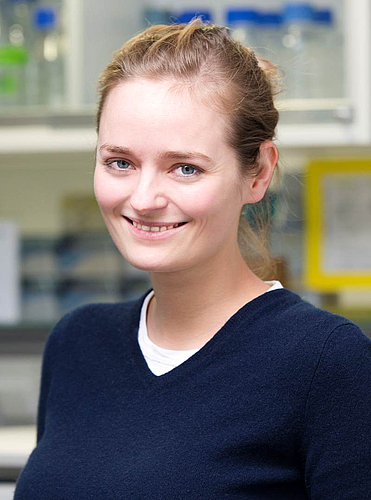In Germany, up to 10% of children and adolescents suffer from asthma. Although the symptoms are easily treatable, there is no cure for this chronic inflammatory disease. Allergic asthma commonly begins with a hypersensitivity of the respiratory tract to a specific allergen. In the course of the disease, there is often an extension of the trigger spectrum. For healthy individuals without asthma, mechanisms that foster the development of tolerance to allergens come into play. In order to develop preventive strategies, it is necessary to understand these mechanisms.
B-cells play a crucial role in the development of allergic reactions on the one hand and the formation of tolerances against allergens on the other hand. After repeated contact with an unknown allergen, a misguided immune response may cause the B cells to produce IgE class antibodies. This and other mechanisms contribute to an overreaction with the release of histamine and other inflammatory substances on renewed allergen contact. B-cells can also lead to the development of tolerance through other mechanisms. Other central cells in mediating immunological tolerance are regulatory T cells (so-called T-regs). These T-regs have immunomodulatory abilities by preventing an allergic reaction by suppressing the immune response to specific allergens. In this case, the allergen is tolerated.
There are indications that the development of the specific allergen tolerance occurs during breastfeeding, but also already in utero, i.e. during pregnancy. Maternofetal contact with allergens leads to the formation of allergen-specific T-regs. Dr. Christine Happle, scientists at BREATH, the Hanover site of the German Center for Lung Research who is part of the Research Laboratory for Allergy and Tolerance headed by Prof. Gesine Hansen, Medical Director of the Center for Pediatrics and Adolescent Medicine of the Hannover Medical School (MHH), is interested in these first steps in prenatal allergen tolerance development. In the mouse model, Dr. Happle examined the influence of B cells on the development of maternofetal immunological tolerance. They recently published their results in the renowned Journal of Allergy and Clinical Immunology.
In her work Dr. Happle compared wild-type mice to experimental animals that cannot produce B cells themselves in a protocol for maternal tolerance to an allergen-specific asthma phenotype. Even before mating, the dams were treated with the allergen ovalbumin (OVA). Compared to the offspring of OVA-exposed wild-type dams, the offspring of B-cell knockout animals showed no protection against murine asthma, but on the contrary had an increased immune response to OVA. This effect was significantly reduced by the transfer of B cells into the dams. This illustrates the important role that B cells play in the development of immunological tolerance. In addition, it was demonstrated in vitro that the amniotic fluid from previously OVA-treated mice contained both the allergen and allergen-specific immunoglobulins and resulted in the formation of T-regs. This suggests that an immune tolerance is transmitted from the mother already before breastfeeding. The findings of the team around Dr. Happle thus confirm the important influence that the maternofetal immune system already exerts in the womb on the development of immune tolerance. Dr. Happle explains, "Our findings support the hypothesis that the pre-birth window seems ideal for inducing antigen-specific immune tolerance." BREATH scientists provide approaches for effective prevention strategies for the development of allergic asthma.
Source: B cells control maternofetal priming of allergy and tolerance in a murine model of allergic airway inflammation. Happle C, Jirmo AC, Meyer-Bahlburg A, Habener A, Hoymann HG, Hennig C, Skuljec J, Hansen G. J Allergy Clin Immunol. 2018 Feb; 141 (2): 685-696.e6. doi: 10.1016/j.jaci.2017.03.051.
Text: BREATH / CD
Photo: MHH / Tom Figiel

Dr. Christine Happle, Head of the Research Laboratory for Allergy and Tolerance at the Department of Pediatric Pneumology, Allergology and Neonatology of the Hannover Medical School and scientist at BREATH